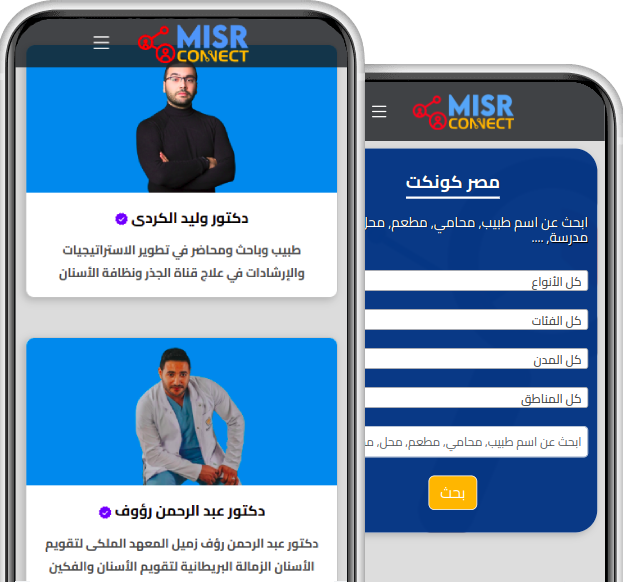Prof. Dr. Ahmed Abdelmohsen
Assistant Professor and Consultant of Oral and Maxillofacial Surgery – Faculty of Dentistry

- Name: Prof. Dr. Ahmed Abdelmohsen
- Phone: 01013789456
- Email: Grandglarydentalclinic
👨⚕️ Dr. Ahmed Abdel Mohsen
Assistant Professor and Consultant in Oral and Maxillofacial Surgery – Faculty of Dentistry
🎓 Academic Qualifications and Experience
Master’s and PhD in Oral and Maxillofacial Surgery from Ismailia University.
Assistant Professor in Oral and Maxillofacial Surgery at Faculty of Dentistry.
Member of the Egyptian Dental Association and the American Dental Association.
Specializes in the diagnosis and treatment of TMJ (Temporomandibular Joint) disorders and facial and jaw pain.
Known for providing advanced treatments for TMJ disorders and chewing muscle diseases.
🔍 Specialized Medical Services Provided by Dr. Ahmed Abdel Mohsen
1️⃣ Diagnosis of TMJ (Temporomandibular Joint) Disorders
📝 Clinical Examination: Assessing spasms, pain, and swelling in the jaw and muscles.
📸 MRI Imaging: Imaging the jaw joint and surrounding tissues to detect internal issues.
🧠 Electromyography (EMG): Measuring muscle and nerve activity in the jaw and facial region.
🩻 CT Scan: 3D imaging of the TMJ to detect bone abnormalities.
🔬 Laboratory Tests: Blood tests for calcium levels and other relevant biomarkers.
2️⃣ Conservative and Non-Surgical Treatments
💠 Jaw Splints and Appliances: Includes hydraulic splints and balanced appliances to reduce jaw pressure.
💉 Joint Injections: Using Hyaluronic Acid, PRP (Plasma), or local anesthetics for pain and swelling relief.
🤖 Botox for Chewing Muscles: Using Botox to alleviate muscle tension and pain.
🌈 UV and Laser Therapy: For reducing inflammation and promoting healing.
⚡ Electrical Stimulation: For tissue regeneration and pain relief.
💊 Custom Medications: Prescribing specific medications for pain relief, inflammation, and muscle relaxation.
3️⃣ Specialized Surgical Treatments
💦 TMJ Joint Washing: Cleaning the joint from deposits using specialized fluids.
🔪 Arthroscopic Surgery: Minimally invasive surgery using a scope to treat joint issues.
⚙️ Stabilizing Cartilage and Ligaments: Reconstructing cartilage or ligaments for improved joint movement.
🧬 Cartilage Grafting: Replacing damaged cartilage with synthetic or natural cartilage.
💪 Ligament Tightening: Surgical repair of ligaments to restore joint stability.
📍 Clinic Location
Ismailia
Address: Shbeen El-Kom Street - In front of the Court Complex - Al-Askari Tower, Third Floor, next to the Laboratory and above the Arab African Bank and EG Bank.
📞 Contact and Appointment Booking
Phone: 01013789456
📧 Email: Grandglarydentalclinic@gmail.com
🛠️ Advanced Medical Techniques
Dr. Ahmed Abdel Mohsen ensures the use of the latest medical technologies such as laser therapy and arthroscopic surgery, guaranteeing precise treatment results. These techniques aim to provide patient comfort, promote faster recovery, and achieve the best therapeutic outcomes.
FAQ
Yes, a regular dental filling (such as cavity fillings) usually requires the use of local anesthesia. The anesthesia is intended to minimize pain and discomfort during the filling procedure. It is administered through an injection in the area around the treated tooth, reducing sensitivity in that area during the process. After the procedure, the effect of the anesthesia may take some time to wear off, and the patient typically feels comfortable once its effect subsides.
If you have any additional questions about procedures or types of fillings, feel free to ask!
-
Silver Fillings (Amalgam):
- Description: Made of a mixture of metals (such as silver, zinc, copper, and mercury).
- Price: Ranges between 300 to 500 EGP.
-
White Fillings (Composite):
- Description: Cosmetic fillings that match the natural color of teeth, made of composite resins.
- Price: Ranges between 500 to 800 EGP.
-
Glass Ionomer Fillings (GIC):
- Description: Made of glass powders and binding material, often used for front teeth.
- Price: Ranges between 400 to 600 EGP.
-
Ceramic Fillings (Porcelain):
- Description: Durable and aesthetic fillings, typically used for front teeth or specific cases.
- Price: Ranges between 800 to 1500 EGP.
-
Customized Fillings (Inlays/Onlays):
- Description: Specially crafted fillings tailored for the affected tooth, like treated fillings.
- Price: Can reach up to 2000 EGP or more depending on complexity.
Notes:
- Prices vary from one clinic to another based on location, reputation, and services offered.
- It is important to consult a dentist to determine the most suitable type for your case and discuss the cost accurately.
The price of a laser tooth filling in Egypt can range between 800 to 2000 EGP, depending on several factors:
- Type of filling used: Whether it is a white composite filling or another type.
- Clinic and location: Larger clinics or those with a strong reputation may charge higher prices.
- Case complexity: If the tooth requires additional procedures, such as root canal treatment, this can affect the cost.
The difference between white and black dental fillings includes several aspects, such as materials, appearance, benefits, and drawbacks. Here's a detailed comparison:
-
Materials Used:
- White Fillings (Composite): Made of composite resins that can be colored to match the natural tooth shade.
- Black Fillings (Amalgam): Composed of a mixture of metals, including silver, zinc, copper, and mercury.
-
Appearance:
- White Fillings: Aesthetic and blend with the tooth color, making them suitable for front teeth.
- Black Fillings: More noticeable with a gray or black color, often used for back teeth where visibility is minimal.
-
Durability:
- White Fillings: Durable but less resistant to pressure compared to amalgam, preferred for areas with less biting force.
- Black Fillings: Stronger and more resistant, ideal for back teeth exposed to higher chewing pressure.
-
Cost and Longevity:
- White Fillings: Generally more expensive and may require replacement more frequently if they wear out.
- Black Fillings: Cheaper and longer-lasting but may cause discoloration of adjacent teeth over time.
-
Health Factors:
- White Fillings: Mercury-free, making them a safer option for some patients.
- Black Fillings: Contain mercury, raising concerns for some, though research has shown them to be generally safe.
After a dental filling, it is recommended to wait a certain period before eating. Here are some general guidelines:
- Temporary Fillings: If the filling is temporary, it's best to wait at least one hour before eating.
- Permanent Fillings: For permanent fillings (like composite or amalgam), you can usually eat after one hour. However, it's advisable to avoid hard or sticky foods for 24 to 48 hours to ensure the filling has fully set.
- Avoid Hot or Cold Foods: After the filling, it's recommended to avoid hot or cold foods and drinks for 24 hours, as the teeth may be sensitive after the procedure.
- Wait Until Anesthesia Wears Off: If local anesthesia was used, wait until its effect has completely worn off before eating, to avoid accidentally biting your tongue or cheek.
If you have any concerns or questions about your mouth after the filling, don't hesitate to consult your dentist.
The price of a root canal filling (root canal treatment) in Egypt can range between 1000 to 3000 EGP, depending on several factors:
- Dentist's Clinic: Prices vary depending on the location and reputation of the dentist.
- Case Complexity: If additional procedures are needed, such as X-rays or the use of special materials, it may affect the cost.
- Materials Used: The materials used for root canal treatment can also influence the price.
A root canal filling (root canal treatment) is typically considered a painless procedure, especially with the use of local anesthesia. Here’s what you can expect during the process:
-
Before the Procedure:
You may feel some pain or discomfort if the tooth is inflamed or infected, but the dentist will numb the area before starting the treatment. -
During the Procedure:
With local anesthesia, you should not feel any pain during the treatment. You might experience some pressure or movement, but there should be no sharp pain. -
After the Procedure:
Once the anesthesia wears off, you may feel mild pain or sensitivity in the treated area. These symptoms are usually temporary and improve within a few days.
Your dentist may recommend pain relievers if needed after the treatment.
Post-treatment Tips:
- It’s advisable to avoid hot or cold foods for a short period after the treatment.
- Follow your dentist’s instructions for aftercare to minimize any discomfort.
If you have any concerns about potential pain or symptoms after treatment, don’t hesitate to consult your dentist.
The pain or discomfort after a root canal filling (root canal treatment) is usually temporary, but its duration varies from person to person. Here’s what to expect:
-
Duration of Pain:
- Typically: Mild pain or discomfort can last between one to three days after the procedure.
- In complex cases: The pain may last longer, especially if there is significant inflammation in the tissues surrounding the tooth.
-
Nature of Pain:
- You might experience mild pain or sensitivity when chewing food or when pressure is applied to the treated tooth.
- Some patients may feel pain when opening their mouth or when pressure is placed on the tooth.
-
Pain Relief Tips:
- Painkillers: You can use over-the-counter pain relievers like ibuprofen or acetaminophen.
- Avoidance: Avoid hot, cold, or hard foods for a period after the treatment.
If the pain persists longer than expected or worsens, it’s a good idea to contact your dentist.
